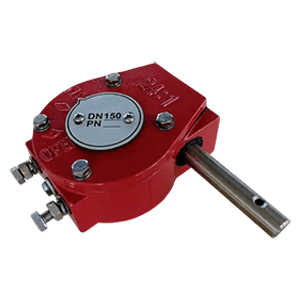What Is a Worm Gear Actuator
A worm gear actuator is a mechanical device used to manually or motor-operate valves, especially quarter-turn types like butterfly valves and ball valves. It uses a worm-and-wheel mechanism to reduce the required input torque while providing precise control and self-locking characteristics.
Tools & Equipment Needed
-
①Wrenches and socket set
-
②Screwdrivers
-
③Allen keys (if applicable)
-
④Anti-seize lubricant
-
⑤Torque wrench
-
⑥Lifting equipment (for large actuators)
-
⑦Replacement worm gear actuator (with matching specifications)
-
⑧Safety gloves and PPE
Safety Precautions
-
①Isolate the valve: Shut off the process line and depressurize the system.
-
②Lock-out and tag-out (LOTO): Prevent accidental actuation.
-
③Support the valve if it’s large or mounted in a vertical pipeline.
-
④Wear protective gear to prevent injuries from sharp edges or dropped parts.
Step-by-Step: How to Replace a Worm Gear Actuator
Step 1: Mark the Valve Position
-
Record the valve’s open/closed position to reinstall the new actuator in the same orientation.
Step 2: Disconnect the Actuator
-
Remove any mechanical linkages, mounting bolts, or drive shaft couplings.
-
If the actuator is large or motorized, use a hoist to prevent injury or misalignment.
Step 3: Inspect the Valve Stem
-
Check the valve stem for corrosion, damage, or misalignment.
-
Clean the stem and apply anti-seize compound if needed.
Step 4: Mount the New Worm Gear Actuator
-
Align the new actuator with the valve stem and flange.
-
Use the correct bolt pattern and torque per the manufacturer’s specs.
-
For ISO 5211 flanged valves, ensure the drive square fits tightly with the stem slot.
Step 5: Adjust Stop Bolts and Travel
-
Use the travel stop bolts on the actuator to fine-tune the open/close limits.
-
Operate the handwheel to check full open and full closed positions.
Step 6: Test the Assembly
-
Cycle the valve manually to ensure smooth operation.
-
Reconnect motor or control components if using electric or pneumatic override.
Step 7: Final Checks
-
Tighten all fasteners using a torque wrench to spec.
-
Confirm that indicator arrows or dials align with the valve’s actual position.
-
Replace any covers, guards, or tags.
When Should You Replace a Worm Gear Actuator
-
①Excessive backlash or lost motion
-
②Leaks or corrosion on the actuator housing
-
③Inability to fully open or close the valve
-
④Internal gear damage or seizing
-
⑤Actuator size no longer matches system requirements
Why Choose I-FLOW Worm Gear Actuators
At Qingdao I-FLOW, we manufacture high-quality worm gear actuators for marine and industrial applications. Our actuators are:
-
①ISO 5211 compatible
-
②Built for harsh environments (corrosion-resistant coatings available)
-
③Available in manual, motor-ready, and waterproof versions
-
④Supplied with matching mounting kits for I-FLOW butterfly and ball valves
-
⑤Certified to DNV, ABS, CCS, and more for marine use
Post time: Jun-30-2025

